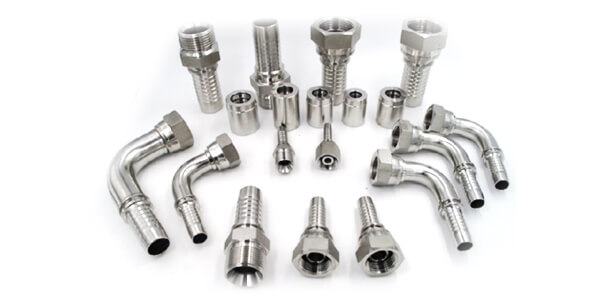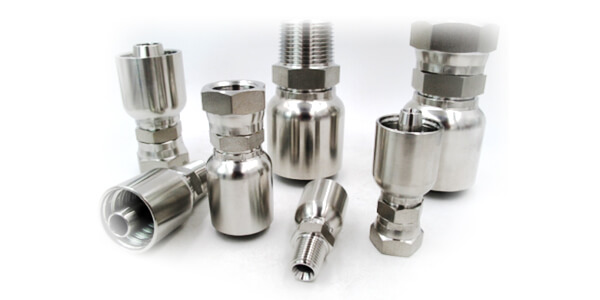
Hydraulic hoses are used in many different industrial applications. Types of hydraulic hose can include reinforced, coiled, corrugated or convoluted and can be made from various materials such as elastomer, fluoropolymer, silicone, thermoplastics and metal.
Choosing the right hydraulic hose can be complicated enough, when factoring in materials, applications and pressure ratings. Choosing the right hydraulic fittings is very important for your hydraulic system. Once you decide on the hydraulic hose that will be used, the next step is to create a reliable and leak-free connection.
6 steps to choose the right hydraulic hose fittings for your hydraulic hose.
Step 1.Choose the right size
Measure the outside diameter,inside diameter and wall sickness of your hose when choosing the hydraulic hose fittings.This helps keep pressure loss to a minimum and maintains proper flow. Correctly identifying these characteristics can then enable you to choose the hose fitting based on system pressure, flow rates and the environment the hydraulic hose is used.
Step 2:Temperature
Consider the hydraulic hose’s average, minimum and maximum operating temperature ranges when choosing various hose fitting materials and seals like O-rings.
Step 3:Application
Identify where and how your hydraulic hose will be used ,indoors or outdoors? Will there be excessive abrasion, vibration, unusual mechanical loads or exposure to external conditions such as moisture, salt water, fertilizer, oxygen, oil, acids or chemicals? Choose coatings and special plating for your fittings that can minimize corrosion or breakdown of the fitting.
Step 4.Media: What kind of fluid will be carried through your hydraulic hose?
Special materials require specialized hose materials and fitting components that are compatible with the fluid being used.
Step 5:Pressure
Consider your system’s average operating pressures and its compatibility with the maximum pressures associated with your hose assembly. Your hose assembly’s working pressures must be equal to or greater than the system pressure itself for safety and effectiveness.
Step 6:Thread type of fittings
Identify end connections using the measuring tools or Coupling Identification section. Once thread ends have been identified, consult the appropriate section of the catalog for specific part number selection.

QC Hydraulics makes all hydraulic fittings as Parker and Eaton standard. If you want to learn more about hydraulic hose fittings,contact us to talk more details.
